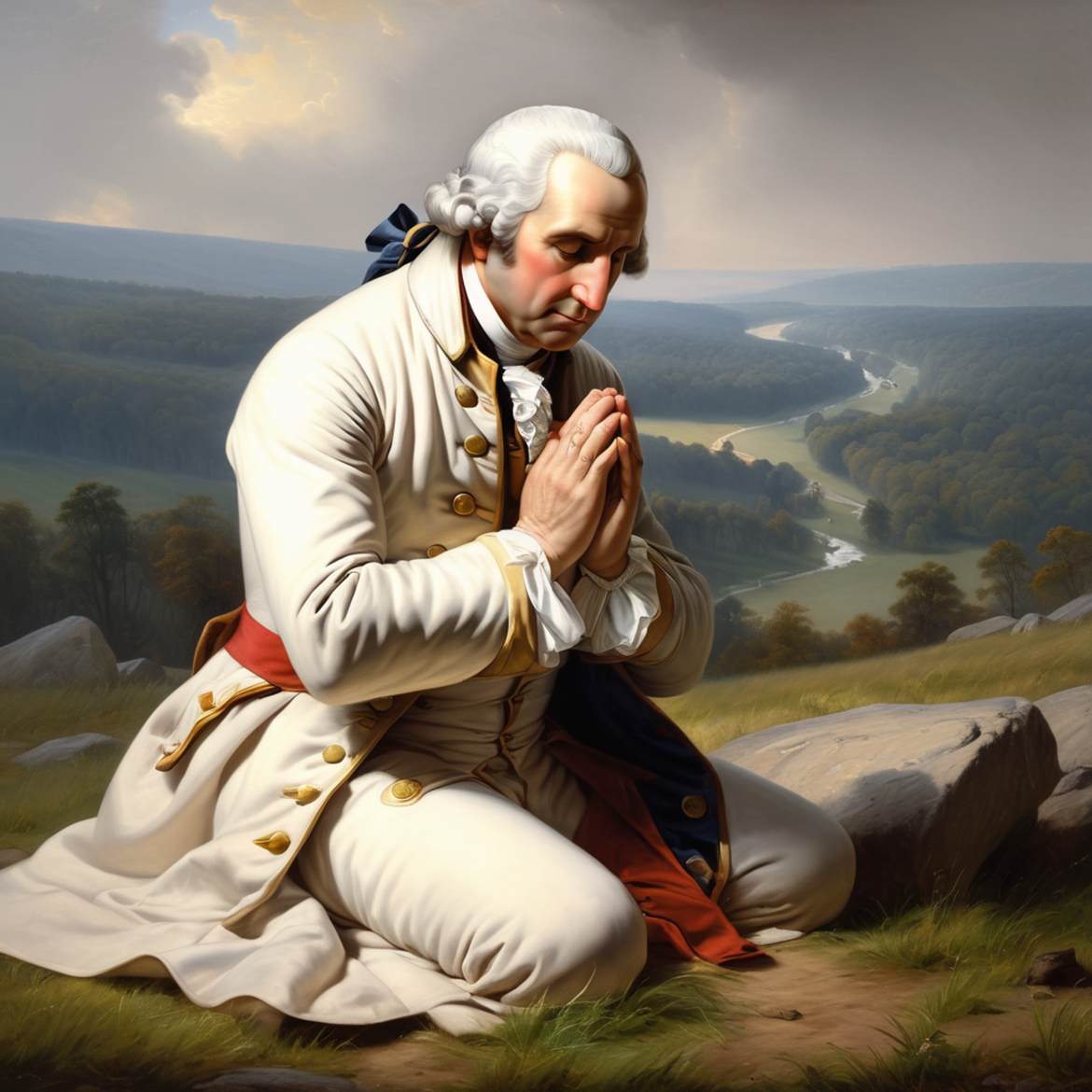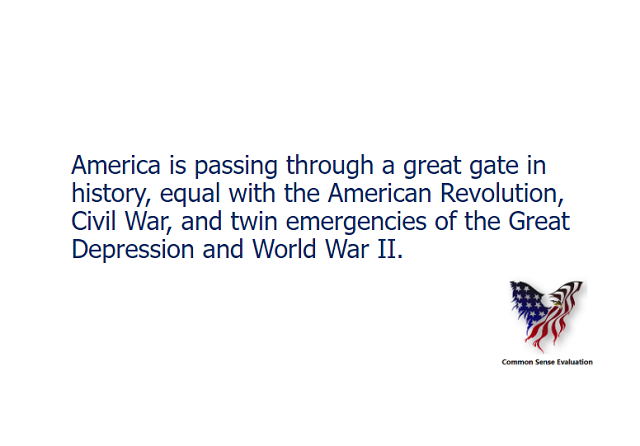In the midst of war’s uncertainty and a young nation’s fragile hope, a story surfaced that would reach almost mythical status. This is the story of George Washington’s vision, a prophetic dream that was said to have been experienced by the very man who led America in its infancy. This tale wasn’t spread far and wide in the days right after it happened, but it waited nearly a century before becoming known when it was published in the National Tribune in December 1880.
The narrative of George Washington’s vision has intrigue, suspense, and a glimpse into what the future might hold. It’s a curious piece of American folklore that offers both a warning and a promise—it’s a story of America’s trials and its potential triumphs through the eyes of its first President.
A Glimpse into the Unknown
The vision, according to the storytelling, took place in the bitter winter of 1777, a winter that saw Washington and his troops weathering hard times at Valley Forge. Washington, worn by the weight of war and leadership, supposedly found some solitude and fell into a state of contemplation. It is here, at this moment of quiet reflection, that the vision is said to have occurred.
According to the tale, Washington saw a mysterious figure, perhaps an angel, who led him through a series of scenes showing the future of America. This shadowy visitor showed him three great events that would come to pass.
The Three Perils of America
The first scene revealed to Washington was America embroiled in another great struggle, this time within its own borders. It was the Civil War, where brother would fight against brother. In this vision, the young country was tested mightily but emerged united, a stronger nation forged from the flames of conflict.
Entranced by the vividness of the angelic vision, Washington then saw a second scene. This time, vast oceans separated America from its new adversary. Across these waters, he witnessed America at war once more, engaged in tremendous battles on foreign soil. This part of the vision rings true to what we now recognize as World Wars, where America played a crucial role in the victories over nations that threatened peace and democracy.
The third and final threat was the most mysterious and is often debated for its meaning. In this scene, chaos emerged within America’s borders once again—cities burned, and a great darkness smothered the land. Yet, from this darkness, hope would emerge. America would once again find its way, recovering from the brink and becoming a beacon of light to the rest of the world.
A Story of Resilience
The article that surfaced in the National Tribune many years later tells us more than just a story of Washington’s dream; it speaks to the collective hope and enduring spirit of America. Whether Washington really had such a vision is not the point. The story survived and was shared because it resonates on a deeper level—it’s about the belief in the resilience of a nation, the conviction that no matter the challenge, through unity and courage, America can and will overcome.
Why Does It Matter?
When the National Tribune published this account, it was a period of rebuilding and reflection. The country had recently endured the devastating Civil War and was still nursing the wounds of division and loss. The story of Washington’s vision offered comfort and a sense of destiny for a nation looking to rebuild and find its purpose again.
Even if the vision was more of a legend than a fact, the power it held was real. It acted like a lighthouse for the spirit of the country, guiding the collective heart of the nation toward the feeling that all struggles have a reason and a conclusion in sight.
Holding onto Hope
The story of George Washington’s vision is less about the mystic experience and more about what it represents. It illustrates the idea that America is meant to weather storms, to struggle, but ultimately to emerge stronger, unified, and with a deeper commitment to the principles of freedom and justice.
Not every day requires the revelation of an angel or the foresight of a vision. Sometimes, the most profound truths are found in the stories we choose to believe and the hope we choose to hold onto. As a nation, the journey is rarely simple or easy, but there is comfort in folklore that suggests our struggles are part of a larger, grander tapestry of destiny.
As readers in the 1880s devoured the words printed about the vision of their first leader, it gave them a sense of looking forward, past the difficulties, to grasp a collective belief that there was greatness ahead. It reaffirmed the American dream: the idea that no matter what hardships we face, we have the capability to rise above and find a brighter future.
This is where the value of the story of George Washington’s vision truly lies. Not in the predictive power of a dream, but in the enduring belief in the promise of the nation and the relentless pursuit of a more perfect union.




